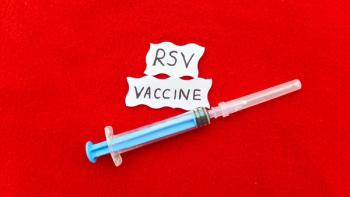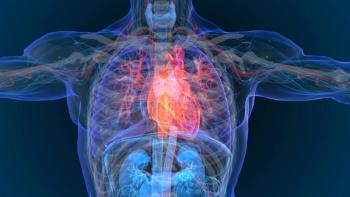
Cholesterol Levels Not Associated With Blood Stem Cell Mobilization in Healthy Donors
Key Takeaways
- Serum cholesterol levels do not influence stem cell mobilization outcomes in healthy donors, challenging their use as biomarkers for HSCT efficiency.
- The study found no significant correlation between cholesterol levels and peripheral blood stem cell counts in 251 healthy donors.
A retrospective analysis found no associations between lipid parameters and the success of blood stem cell mobilization in a cohort of healthy donors.
Serum cholesterol levels were not found to influence stem cell mobilization outcomes in healthy donors, suggesting that lipid levels are not a viable biomarker for predicting mobilization efficiency in patients undergoing allogeneic hematopoietic stem cell transplantation (HSCT), according to new data published in the Journal of Clinical Medicine.1
What Is Stem Cell Mobilization?
Stem cell collection is a critical aspect of HSCT, requiring peripheral blood stem cell mobilization. Through the administration of granulocyte colony-stimulating factor (G-CSF), HSCs are released into the peripheral blood for collection in leukapheresis. Health care professionals have reported challenges throughout the process, including challenges in choosing the appropriate mobilization agent and poor venous access.2
Another observed obstacle is varying responses to G-CSF, which can impact mobilization success. Unique aspects of each donor, including their age, sex, and baseline hematologic parameters, can serve as predictors of efficiency; more recently, metabolic factors—especially cholesterol—have emerged as salient possible modulators. Cholesterol plays a critical role in maintaining cellular homeostasis, and in the context of stem cell mobilization, there are indications that it could enhance mobilization of stem cells into peripheral circulation.3-5
There have been limited retrospective studies examining the impact of cholesterol levels on stem cell mobilization, with no large-scale studies that have exclusively analyzed healthy donors. Moreover, despite some positive observations as to cholesterol’s enhancing effects in mobilization, other studies have offered contrary results. Investigating the association in a cohort of healthy donors allows for a clearer picture of the donor-related determinants of mobilization success.1,6
Does Cholesterol Impact Mobilization Success?
In the current study, the investigators sought to determine whether cholesterol levels could serve as a predictive factor for peripheral blood stem cell (PBSC) mobilization in healthy individuals. They conducted a retrospective analysis of 251 healthy donors who underwent mobilization using only G-CSF between January 2010 and April 2021. Each donor received subcutaneous recombinant G-CSF (filgrastim, Neupogen; Amgen) at 10 µg/kg/day for 4 consecutive days, with CD34+ blood counts measured on day 5. Apheresis was then performed utilizing a continuous flow cell separator.1
At the fifth day of G-CSF administration, the mean peripheral blood stem cell count was 70.5 ± 33.3 cells/µL, according to the investigators. Importantly, no donors experienced mobilization failure, and the target CD34+ cell dose was garnered after a single apheresis session in 140 (55.8%) donors.1
Along with cholesterol levels, the investigators examined the associations between other clinical and laboratory variables associated with PBSC counts. Accordingly, significant positive correlations were observed between several hematologic parameters and PBSC count, including white blood cell, hemoglobin, platelet, absolute neutrophil, and lymphocyte counts. Contrastingly, there were no significant associations found between donor age, body weight, height, body mass index, monocyte count or total cholesterol, triglyceride, high-density lipoprotein cholesterol (HDL-C), or low-density lipoprotein cholesterol (LDL-C).1
There were also no major correlations observed between peripheral blood CD34+ cell counts and donor lipid parameters, including total cholesterol, triglyceride, HDL-C, and LDL-C levels.1
Next, the investigators assessed the association between CD34+ cell yield per kilogram of donor body weight and clinical parameters. CD34+ cell yield was found to be inversely correlated with donor height, body weight, and hemoglobin levels, while a strong positive correlation was found between cell yield and peripheral blood CD34+ cell count. Once again, there were no statistically significant associations between CD34+ cell yield and lipid profile parameters.1
Overall, there was no significant relationship between serum cholesterol levels and peripheral blood CD34+ HSC counts. Although cholesterol is integral in other facets of hematopoiesis, such as encouraging membrane fluidity and lipid raft formation, evidence is limited—but encouraging—regarding its impact on hematopoiesis regulation. The current findings are important in addressing remaining gaps in the literature and providing steps for future research, which should seek to further improve the accuracy of HSC mobilization.1
REFERENCES
1. Seçilmiş S, Candir BC, Bozan E, et al. Cholesterol levels are not associated with peripheral blood stem cell mobilization in healthy donors. J Clin Med. 2025;14(17):6239. doi:10.3390/jcm14176239
2. Halpern L. Navigating the complex landscape of sickle cell gene therapy: Operational challenges and collaborative solutions. Pharmacy Times. Published September 11, 2025. Accessed October 8, 2025. https://www.pharmacytimes.com/view/navigating-the-complex-landscape-of-sickle-cell-gene-therapy-operational-challenges-and-collaborative-solutions
3. Wang T, Wen S, Chen R, et al. Factors associated with peripheral blood stem cell yield in volunteer donors mobilized with granulocyte colony-stimulating factors: the impact of donor characteristics and procedural settings. Biol Blood Marrow Transplant. 2008;14(11):1305-1311. doi:10.1016/j.bbmt.2008.09.002
4. Oguro H. The roles of cholesterol and its metabolites in normal and malignant hematopoiesis. Front Endocrinol. 2019;10. doi:10.3389/fendo.2019.00204
5. Gomes AL, Carvalho T, Serpa J, Torre C, Dias S. Hypercholesterolemia promotes bone marrow cell mobilization by perturbing the SDF-1:CXCR4 axis. Blood. 2010;115(19):3886-3894. doi:10.1182/blood-2009-08-240580
6. Donmez A, Kabaroglu C, Arik B, Tombuloglu M. The effect of cholesterol levels on hematopoietic stem cell mobilization. Trans Apheresis Sci. 2012;47(1):9-12. doi:10.1016/j.transci.2012.03.009
Newsletter
Stay informed on drug updates, treatment guidelines, and pharmacy practice trends—subscribe to Pharmacy Times for weekly clinical insights.




















































































































































































































